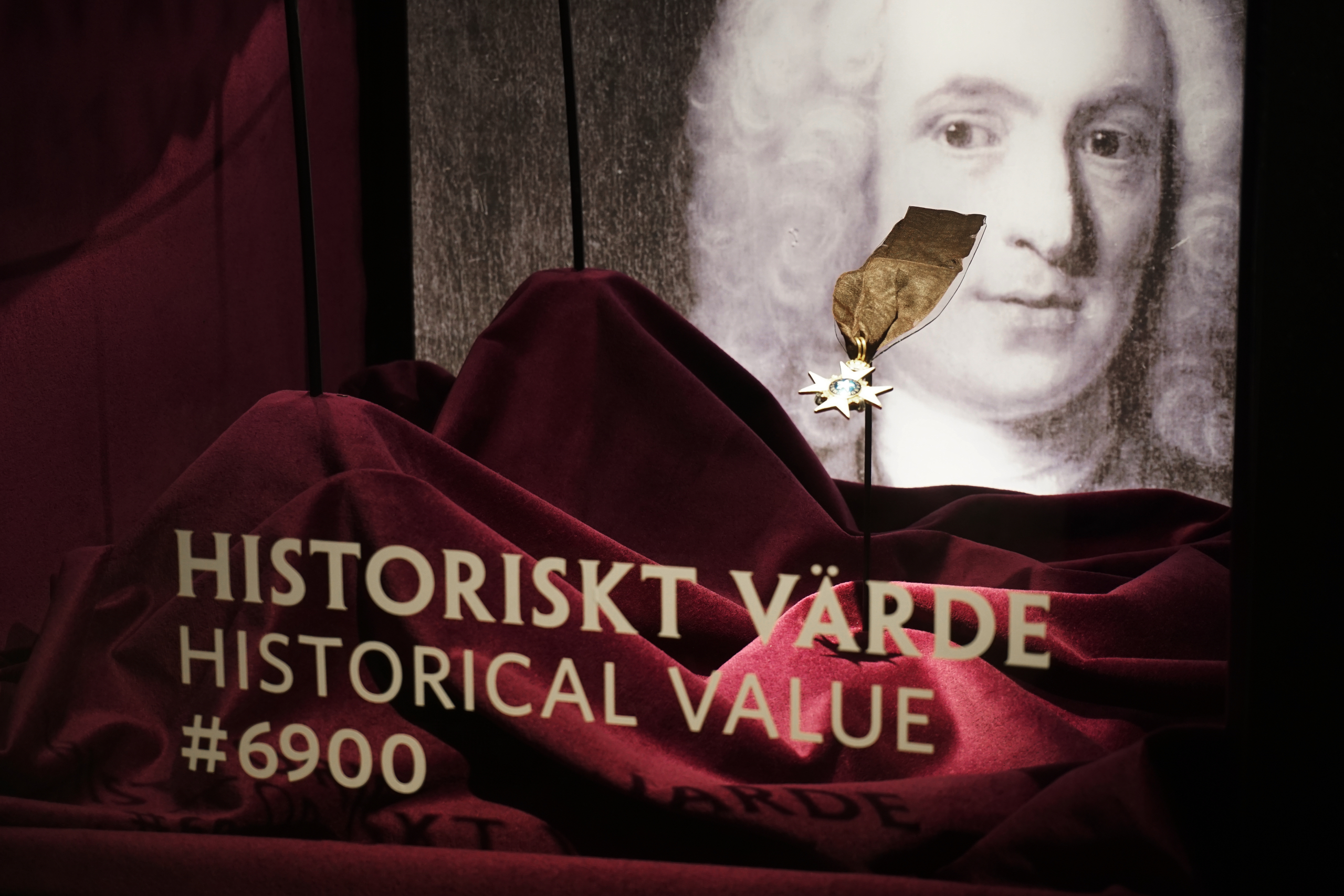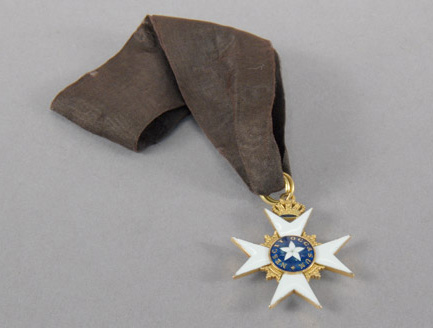
Carl Linnaeus (von Linné in Swedish) was born in 1707. He was a physician and botanist and is still famous in Sweden and other countries. In 1753 Linnaeus was made a Knight of the Order of the Polar Star with a black ribbon by King Adolf Fredrik for his scientific achievements.
The Order of the Polar Star had been created five years earlier and was presented by the king as a reward. The fact that Linnaeus received it was remarkable because many people believed his social position was too low for him to receive such an order.
After his death in 1778 the badge and ribbon were given to his apprentice, a surgeon named Johan Gustav Acrel. When the order was donated to Gothenburg Museum in 1863 it was accompanied by a certificate signed by Acrel’s grandsons.
Historical value anchors the past in the present – something is true, it really did happen and here is the object that witnessed everything. This truth is ensured by showing the object’s provenance. Provenance means that we can link an event or person to an object and prove that the story is also historically accurate.
Via Linneaus’s Order of the Polar Star we can talk about him, about the view of science in the 1700s, about the origins of racial biology and about the need for badges of merit. Objects associated with historical or famous people always attract attention.

6901
Carl Linnaeus’s Order of the Polar Star
Carl Linnaeus’s Order of the Polar Star is a knight’s badge together with a black ribbon. The badge is 4 cm across and looks like a star with four white rays. The shape is called a Maltese cross. In the middle is a dark blue circle with gold edging. Inside the blue roundel is a white five-pointed star.
Around the star is the Latin inscription “Nescit Occasum”, which means “It knows no decline”. The four white arms of the cross each split in half to create a total of eight points. Between the arms and at the top where the badge is attached to a black ribbon are small flat royal gold crowns.
GM:7